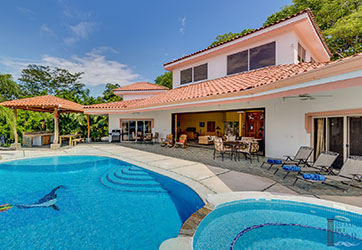Property: eak Plantation Farm with 25 hectares for sale in Nicoya - North Pacific, Costa Rica
Property
No.: 1739
| Property No.: | 1739 |
| Location: | Costa Rica, North Pacific, Guanacaste, Guanacaste |
| Price: | US $ 290000 (US $ 320000) |
| Size: | 250000 |
| Construction size: | |
| Shopping: | 25 |
| Street: | 0.3 |
| School: | 22 |
| Construction year: | 0 |
| Rooms: | 0 |
| Bedrooms: | 0 |
| Bathrooms: | 0 |
| Parking lots: | 0 |
| View: | beautiful mountain view |
| Extras: | |
Real Estate Costa Rica:
Central Valley | North Pacific | South Pacific | Central Pacific | Caribbean | Central North
Description:
This 25 hectare country house was purchased by us in 2015 and in August of the same year we planted 20 hectares with teak. The remainder consists of 2 smaller patches of forest and the banks of the planting Sandalflusses.
The farm is accessible by roadways and accessible from two sides. From the city of Nicoya they can be reached in around 30 minutes.
The company has concentrated during the past years in the plantation and commercialization of teak farms. This focus has diverse reasons:
Special qualities of this wood
W worldwide demand for teak wood
H high profitability of teak farms
Low risk of teak cultivation
The qualities of teak wood
It is fairly easy to plant and maintain teak trees on the adequate soils and climate conditions of Costa Rica. They are highly resistant against pests, drought and wildfires. After the fifth year the maintenance of a farm is relatively easy and without high costs.
Teak wood is part of the family of the hardwoods of rapid growth. Already after 5 years we have tree trunk diameters of 10-15 cm and heights of up to 10 meters. At age 20, the ideal age for harvesting, the trees have diameters of 25-35 cm and heights of 25 meters.
Sawn teak timber stands out because of its nice color and grain, as well as because of its high oil content, which reduces the absorption of water making it ideal for applications in exteriors.
Demand for teak wood
Thanks to the excellent material qualities, planted teak timber finds its use in several surroundings:
Exterior furniture and garden decks
Parquet floors
Doors
Interior furniture
House construction
The most important markets nowadays for teak wood are found in India, China, Indonesia, USA and Europe. But also in Costa Rica there is an increasing demand for this type of wood, mainly in the construction industry.
Activities on a teak farm
All teak farms are set on former cattle-farms. As forests are strictly protected in Costa Rica these farms consists not only of grassland but as well of areas with primary and secondary forest which cannot be deforested for plantations. Therefore the farms we are offering always include a considerable area of natural forests.
When choosing the adequate land we consider several important factors:
The climate conditions
The quality of the soil
The elevation above sea level
The topography
The connections to transportation and electricity
Additional usage, such as building of a vacation home
For the planting of the farm at the beginning of the rainy season we exclusively use seedlings from the certified seeds of our supplier Hermanos Cabalceta Aguilar S.A.. The tree seedlings are planted with a distance of 3 to 3.5 meters and fertilized. During the first three years of a teak plantation we pay careful attention to proper weed control. Mostly with the help of machetes, creepers and brushes that crowd or compete with the trees are cleaned until the seedling can defend itself after reaching a height of aprox. 5 meters. During the first 8 years the release of branches is a constant activity in order to ensure that the growth of the tree concentrates on its trunk. After approximately 5, 9 and 13 years we perform thinning, so that from 800 seedlings originally planted per hectare we reduce them to 250-350 trees. This offers the remaining trees additional space for growth so that they are able to reach better trunk diameters.
The ideal harvesting time for teak trees is when they are 20 years old, since after that age, the growth rate is very slow. Logs can be loaded on site on containers for their export or be sawn to timber for the local or international market.
Profitability
We part from a conservative calculation of the profitability of a teak plantation of 280 trees per hectare, that can be harvested at the age of 20. With an average diameter of 30 cm and a usable length of 8 meters they produce aprox. 158 m3 timber, of which around 111 m3 can be sold, due to the waste. At today’s market price, these 111 m3 timber can earn $60.000, after deduction of all side costs. These market prices refer to trees standing on the plantation. If you can saw and export the timber yourself, than the return should be even higher.
Our sale price per a hectare land with one-year-old teak trees, including maintenance costs for the first 7 years of the plantation, is around US$ 15,000. Further maintenance costs can be financed by the proceeds of thinning.
This means, that after an investment of US$15,000, after 19 years (at today’s prices) you will have a return of US$60,000.
Plus the expected price increase for teak wood. With an increase of only 3% per year, after 19 years you would have earnings of $105,000.
Plus the value of the land. As landowner you are free to decide if you will renew the plantation or will give it a different use!
This represents an interest rate (IRR) of more than 13%.
Contact:













.jpg)


